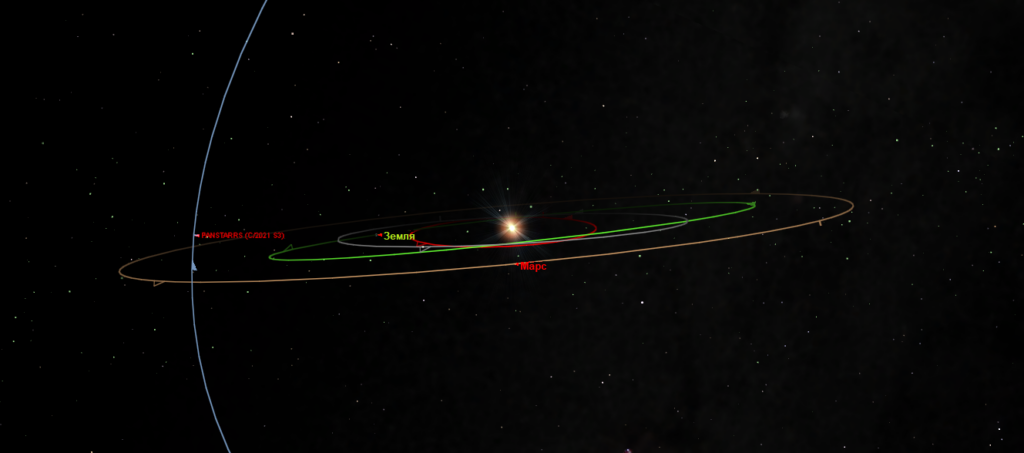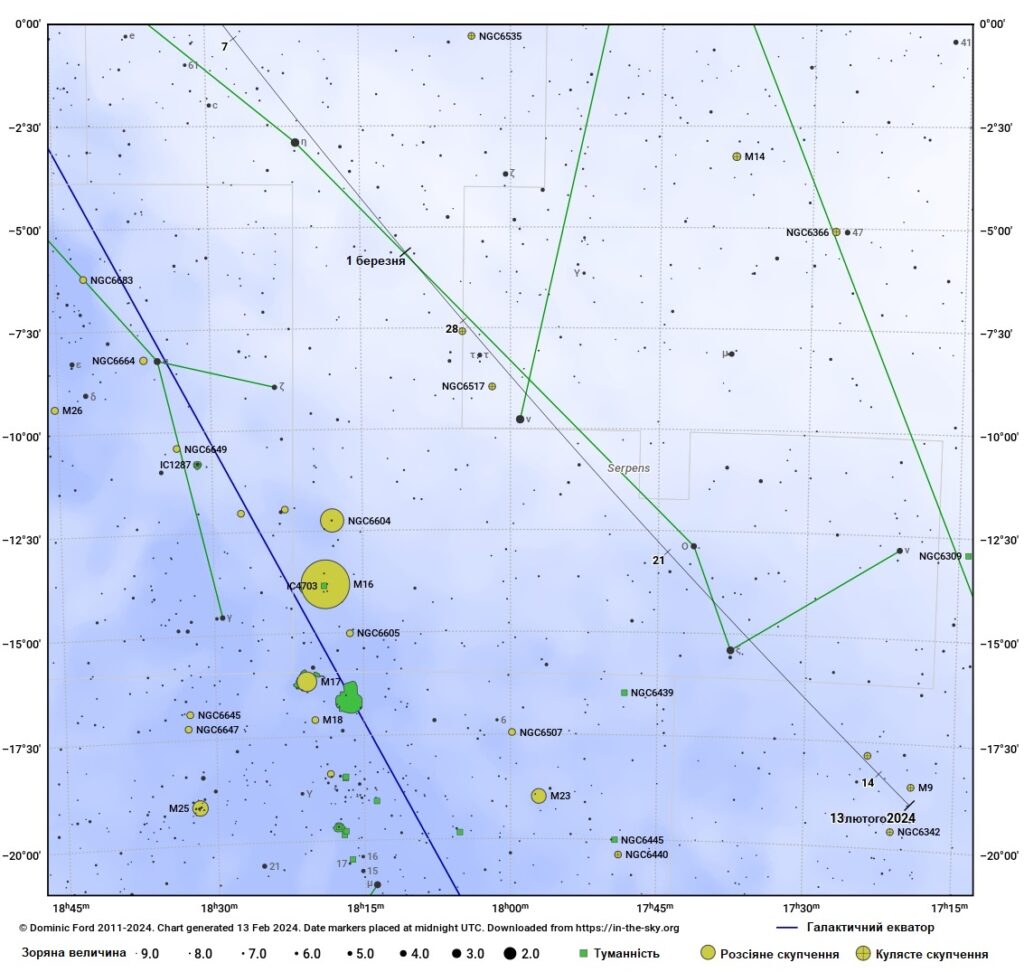At the end of September 2021, one of the PanSTARRS telescopes located on Mount Haleakala (Hawaii) discovered a comet designated C/2021 S3. At that time, it looked like a small nebula of the 20th magnitude and was located at a distance of 8.62 AU (1 billion 290 million km) from the Earth. Calculations have shown that this celestial body will come closest to the Sun on 14 February 2024: on that day, they will be separated by 1,320 AU (197 million km). Then, moving in a hyperbolic orbit, the “tailed guest” will leave the Solar System forever.
Using the “standard” formula, according to which the brightness of a comet is inversely proportional to the square of its distance from Earth and the fourth power of its distance from the Sun, astronomers have calculated that in early February, the visible brilliance of C/2021 S3 will reach eighth magnitude, meaning it will be easy to see even with small binoculars. Of course, it would have been better if it had arrived two and a half months earlier: then, during its perihelion, it would have been at almost the shortest possible distance from Earth, making it a remarkable fourth magnitude object that, under favourable conditions (clear night sky, no Moon and no artificial light), is easy to spot with the naked eye.

But it did not happen as expected. Less than favourable orbital configuration was accompanied by the comet’s increasing brilliance peculiarity, which began to lag behind predictions a few months ago. Scientists have already made many assumptions about the reasons for this. The most likely version is that this return of C/2021 S3 to the Sun is not the first: it has already visited the vicinity of our luminary a long time ago, and a mineral crust has formed on its surface, protecting the interior, rich in volatile substances, from sunlight and heat.
Thus, now the brightness of this comet is slightly above magnitude 10, and the conditions for observing it in our latitudes will remain unfavourable for some time. On 14 February, at 5:20 am (at this time, morning astronomical twilight will begin in Kyiv), for observers at 50°N, it will be 14° above the southeastern part of the horizon. Residents of the south of Ukraine will have a slight advantage – they will be able to see C/2021 S3 a couple of degrees higher. In the sky less than a degree away from the comet on this day, the globular star cluster M9 will be visible, with a slightly higher brilliance.
On 17 February, the comet PanSTARRS will “crawl” from the constellation Cygnus to the constellation Serpens, with its height rising to 16° at the beginning of astronomical twilight for the latitude of Kyiv. Three days later, the almost full Moon will start to interfere with the observations. On 25 February, the “tailed star” will return to the Serpent, passing about 0.5° from its star ν (nova), and three days later it will be in the Serpent again. On the morning of 4 March, it will be easy to find 0.5° west of its star η (eta).

As it moves away from the Sun, the comet will continue to approach the Earth for some time and on 15 March it will pass 1,298 AU (194 million km) away. It seems that its apparent luminosity will have already begun to decline by then, so for successful observations, you will need to go somewhere out of town and arm yourself with a telescope with a lens diameter of at least 10 cm. And on 20 March, the Moon will reappear in the pre-dawn sky and spoil everything…
As already mentioned, comet C/2021 S3 PanSTARRS has a hyperbolic orbit, meaning that this time it is approaching the Sun for the last time. Therefore, if possible, try to see it – especially since the predictions of the brilliance of “tailed stars” are quite unreliable in many cases, so we cannot exclude the possibility that this particular comet will at some point “remember” the first forecasts of its brightness and allow you to admire itself in all its glory.

